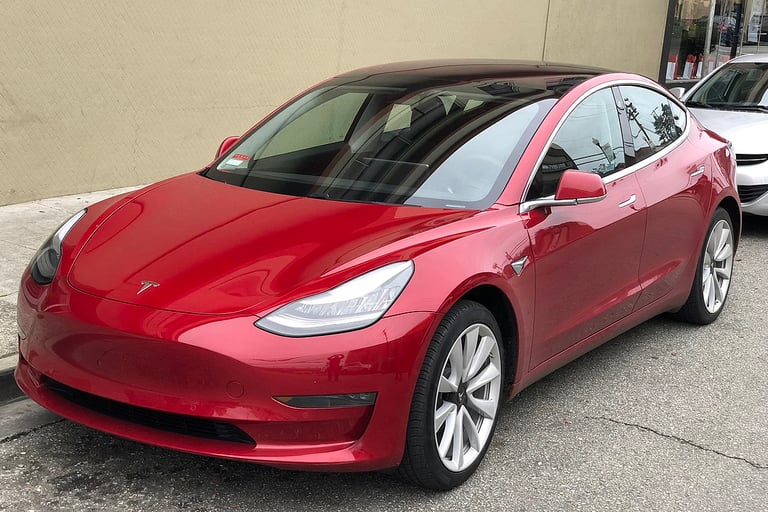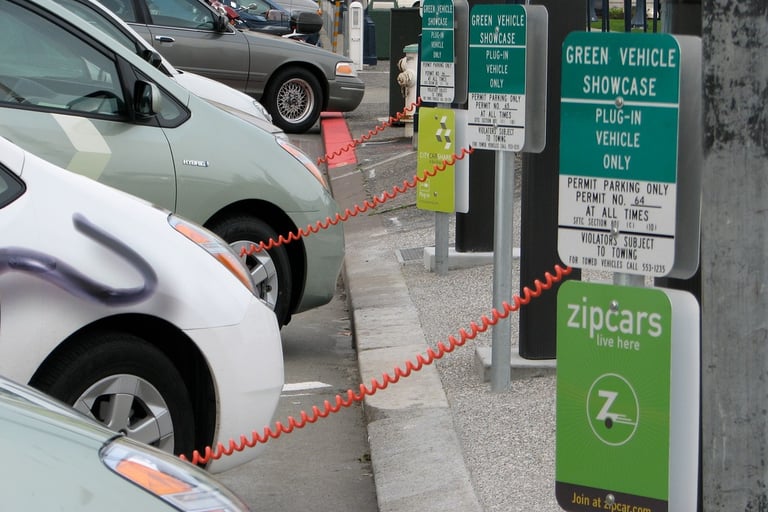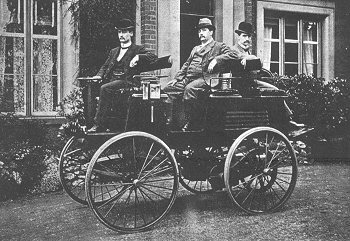Electric Cars & Disruptive Technology
Dive into the electrifying world of Electric Cars and discover how disruptive technology is steering us towards a sustainable future! Uncover the innovations reshaping the auto industry and the challenges ahead. Don't miss this transformative journey!
ELECTRIC VEHICLESMECHANICAL ENGINEERINGAUTOMOTIVE ENGINEERINGCLIMATE ACTIONSUSTAINABILITYGLOBAL WARMINGINNOVATIONMANUFACTURINGCLIMATE CHANGEINDUSTRY 4.0
Indrajeet Yadav
2/28/20195 min read


“No one can stop an idea whose time has come.”
Victor Hugo
Electric Cars: The Electrical Market Shocker
But has the time for electric cars come? And, are they a disruptive technology or a progressive development? These questions merit analysis of electric cars’ pros and cons.
For one, electric vehicles (EVs) emit less or zero greenhouse gases (GHGs), a prime advantage when Global Warming and Climate Change are signalling the loud ticking of Planet Earth’s ecological clock.
Plus, the quantum of oil-gas reserves will be exceedingly uncertain as these fossil fuels deplete rapidly. Unpredictability will stoke up speculation, triggering massive price swings on either side. EVs are more necessary than we think.
Necessary, yes! But has EV technology reached sufficient development levels? What will be the overall ramifications of EVs on the larger economy? They surely sound like disruptive innovation, but will they be creatively destructive?
Electric Car Technology
Electric vehicles (EVs) use different amounts of electricity for propulsion:
Battery Electric Vehicles (BEVs): use only electricity without a gasoline (petrol) or diesel engine (henceforth called internal combustion or IC engines)
Plug-in Hybrid Electric Vehicles (PHEVs): also called Extended-Range Electric Vehicles (EREVs), these employ both battery electricity and IC engine
You can charge their batteries by plugging-in them to external electric sources. Regenerative braking also charges their batteries
Hybrid Electric Vehicles (HEVs) utilize battery and IC engine, but the battery is charged only via regenerative braking. IC engine supplements battery power only when load and speed rise
There are also Fuel Cell Electric Vehicles (FCEVs) which generate electricity by mixing hydrogen and oxygen. Water and heat are the by-products. FCEVs use hydrogen fuel, which they combine with oxygen absorbed from Regenerative Braking benefits from the reverse motor operation. Electric motors running in reverse generate electricity. Braking slows the EV, running the motor backwards. The created electricity is stored and used to propel the car forward.
EVgo provides a comprehensive list of electric vehicles :
Chargers for EV can be:
Level 1: utilize 12-volt supply to charge batteries in 8 hours to cover 75-80 miles
Level 2: take 4 hours to charge a battery for 75-80 miles distance using 24-volt supply. These are available at public charging points and offices
Level 3 or DC Fast Chargers: are found at special charging stations and take 30 minutes to charge an EV battery for running up to 90 miles
Electric Cars: Pros & Cons
Chief pros of EVs:
Eco-friendly: because they don’t burn fossil fuels. And because electric motors convert battery power into vehicle movement more efficiently than IC engines do using fuel power.
How much emissions they cut depends on the source of charging electricity:
BEVs charged from dirty electricity still emit less than conventional vehicles
FCEVs utilizing hydrogen made using dirtiest electricity are yet 30 percent cleaner than IC engine vehicles. Plus, their range and refuelling is similar to the latter.
Economical: greater energy efficiency means BEVs save about $1000 per year compared to gasoline vehicles. BEVs shut down automatically when idling to cut energy wastage. Regenerative braking also saves energy
Quieter and Smoother with Fast Acceleration: because electric motors deliver torque faster than IC engines do. Smoother acceleration means less discomfort in typical start-stop city conditions
Tesla is looking to extend the life of EVs to 1 million miles – about 7 times of IC engine vehicles.
Limiting factors at present:
Battery Technology Restricts Range
Charging Infrastructure Deficit
Massive Investments vis-a-vis IC Engine Vehicles
A 2012 study by the US Department of Energy (DoE) concluded that EVs will be commercially viable only when their:
production cost takes a 88% dip; and
battery power density doubles.
Lithium-ion batteries offer limited range. For EVs to displace IC engine cars, they need a 200-mile range with under $35,000 price tags. Interestingly, electric cars existed towards the end of the 19th century. It was the longer range of IC engines cars that sidelined them.
The Disruptive Creativity of Electric Cars
Joseph Schumpeter, in 1942, coined the term Creative Destruction – process and product innovations which destroy old ones and create a new order by boosting productivity and reallocating resources.
Clayton Christiansen’s 1997 book The Innovator’s Dilemma first used the term Disruptive Innovation – technology that creates a new product or business model by challenging established market players and practices.
While creative destruction captures the overall transition, disruptive innovation focuses on the technological aspect. Government subsidies and fall in battery prices will primarily determine the demand for and disruption by EVs.
And with the spectre of ecological catastrophe looming large, governments are doing their bit:
Electric Vehicles Initiative (EVI) is a International Energy Agency (IEA)-coordinated measure set up by the Clean Energy Ministerial (CEM) in 2010 to have minimum 30% EVs in all new vehicle sales by 2030
Chinese government is aiming for 20% EV (BEV and PHEV) penetration by 2025
Europe may have 25% light EVs (BEVs and PHEVs) by 2025, and the U.S. about 10%
Speaking of disruption:
Mega Losers are likely to be the Legacy Automotive Sector, Oil-Gas Refiners and Producers, and Gas/Refuelling Stations.
Big Winners may include Power Utilities and Miners of Lithium, Cobalt, Copper, or Nickel
Roaring demand for electricity will spell boom for power utilities as also for companies mining metals required for EVs. Demand for IC engine vehicles and fossil fuels will plummet.
Even if gas stations remodel to electric charging points, few would wait for hours to recharge for another 200-odd miles. Most owners will charge their EVs overnight at home.
Charging stations along busy, intercity routes and those besides long distance tracks will thrive, particularly if they offer specific fleet maintenance services for brakes, tires, and batteries. Motor inns and hotels will need to develop charging infrastructure.
Such disruption is not a foregone conclusion though. Joe Barkai explains why:
Players targeting to rattle markets need complete insights into technology, customer maturity, capacity and willingness of markets to change, and the model and ecosystem of business
Market resistance can create roadblocks for disruptive innovation
Established market players with massive finances and robust networks are not easy to replace, particularly in engineering where innovation matures at snail’s pace
Getting to and staying on the top with disruptive technology requires tons of patience, funds, and publicity
Final Analysis
Most innovations start slow. Eventually, there comes a tipping point when they gather critical mass and move onto a high growth trajectory. Often, disruptions are creative. Computers were the dreaded job killers back in the 1970s. Today, they are an essential commodity!
Rev up your knowledge with our latest article on electric cars and disruptive technology! Discover how innovation is reshaping the automotive industry. Ready to be a part of the future? Contact us at indrajeety1981@gmail.com or +91-9822052945 to learn more. Don’t miss out!
#ElectricCars #Innovation #FutureOfTransport








Tesla Model 3
Credits Carlquinn at Wikipedia
Types of Electric Cars
Credits EvGo
Sufficient Charging Infrastructure is Necessary for Mainstreaming Electric Cars
Credits Felix Crammer at Wikipedia
Thomas Parker’s Electric Car in 1895
Credits Wikipedia
